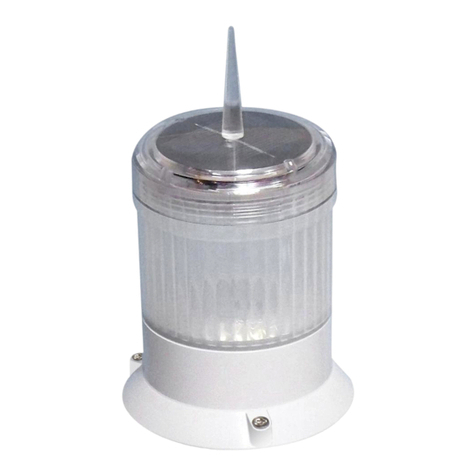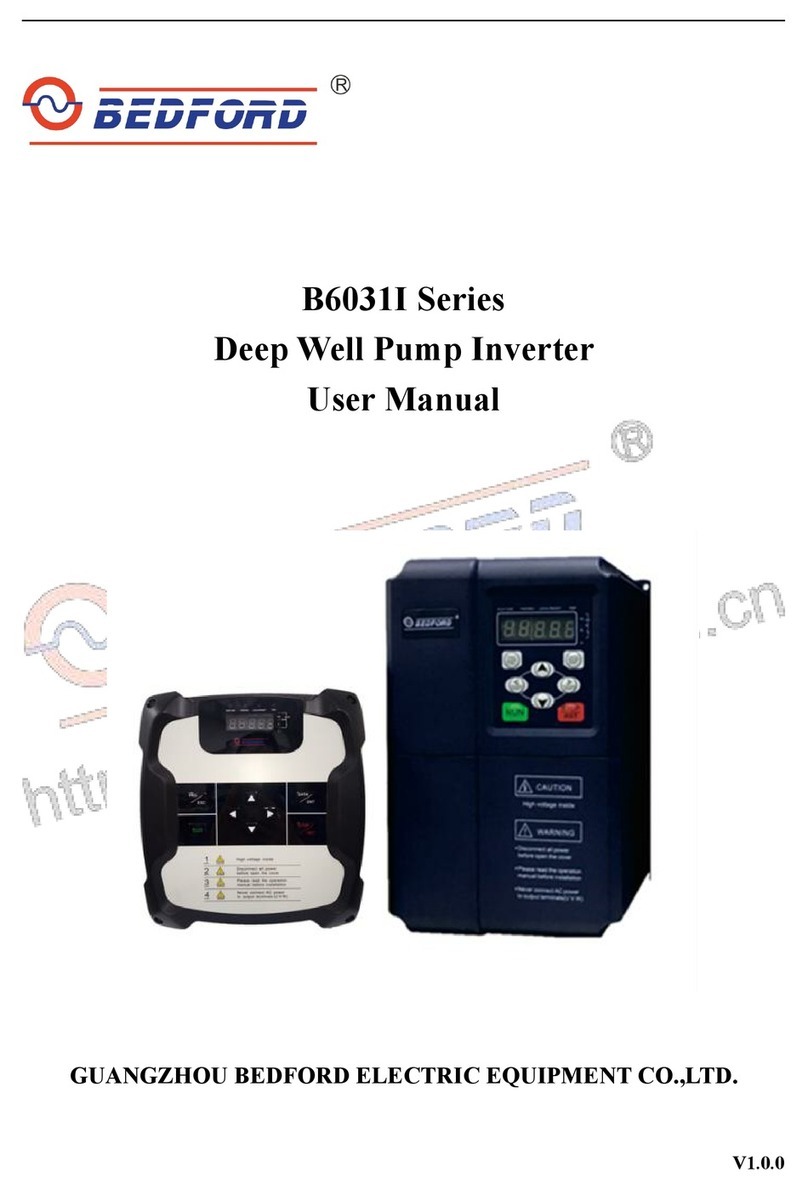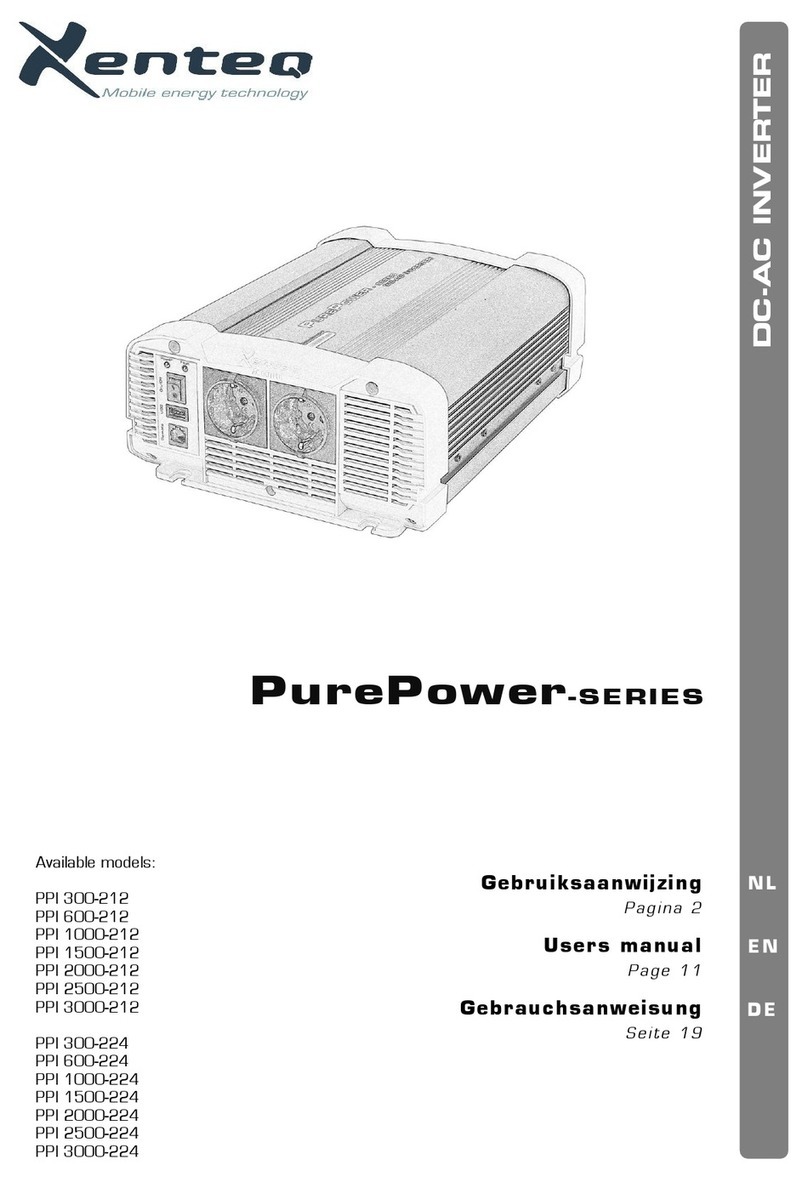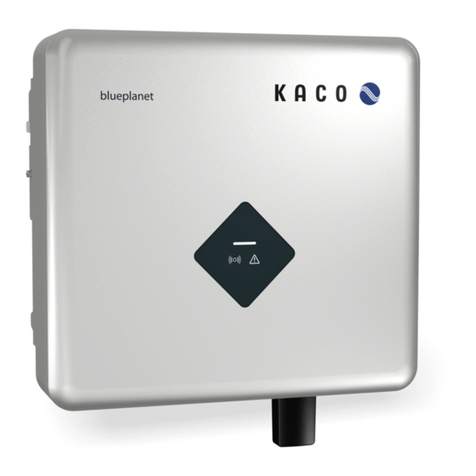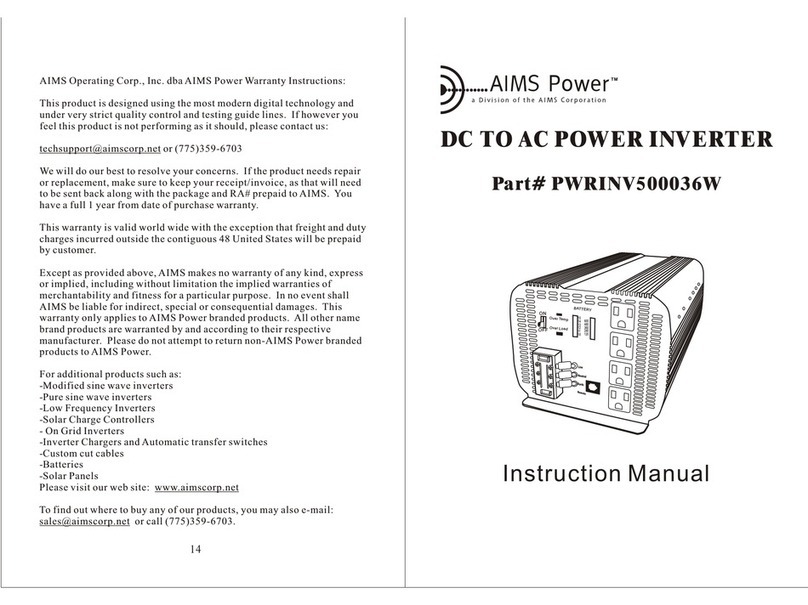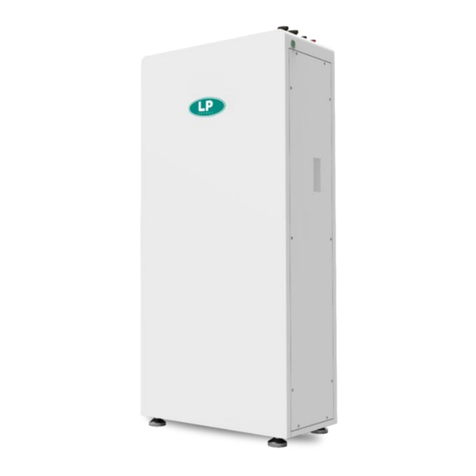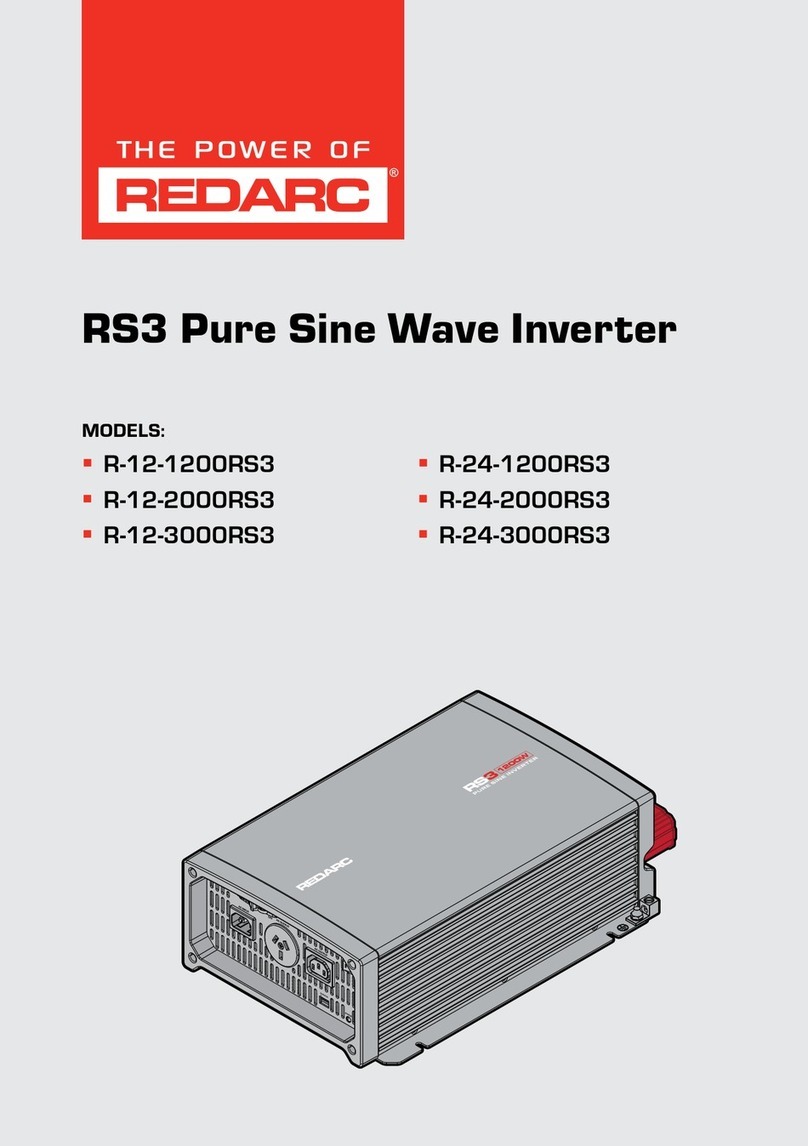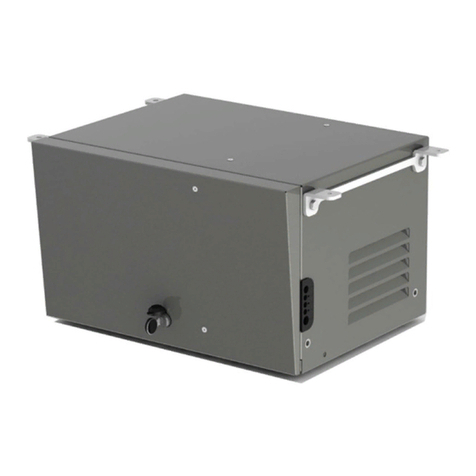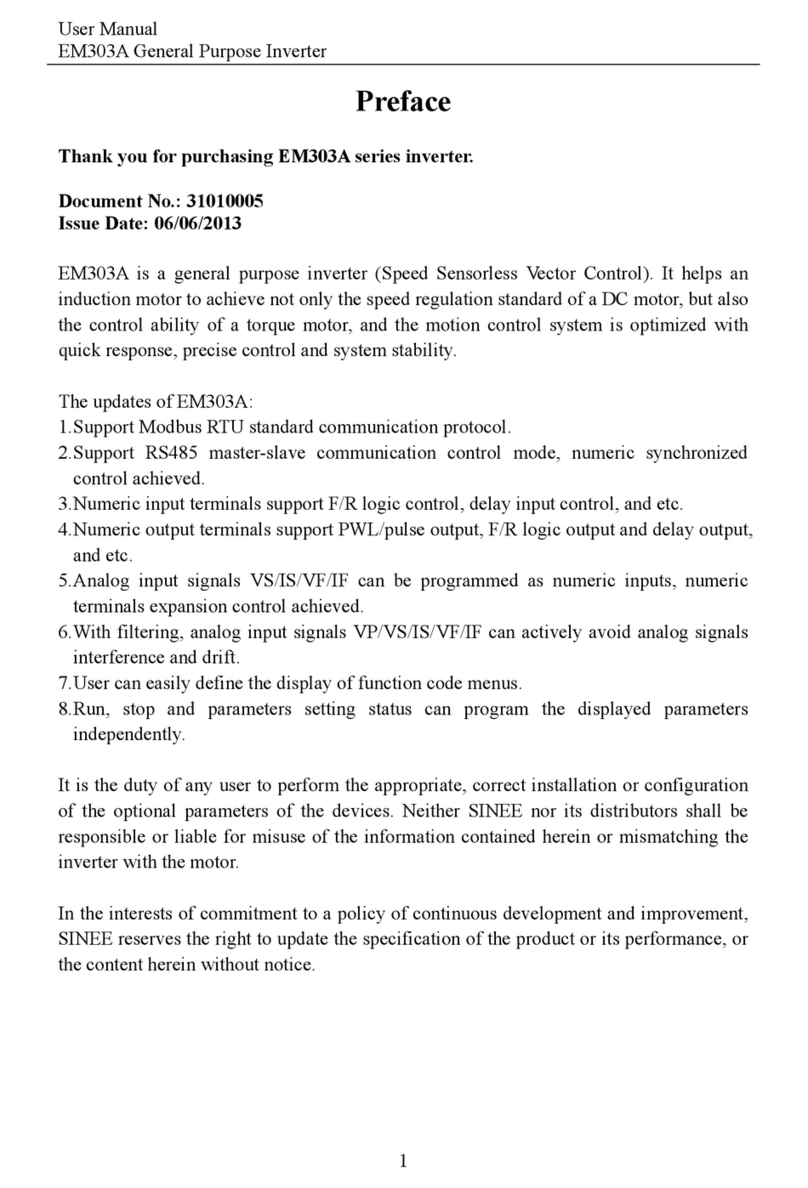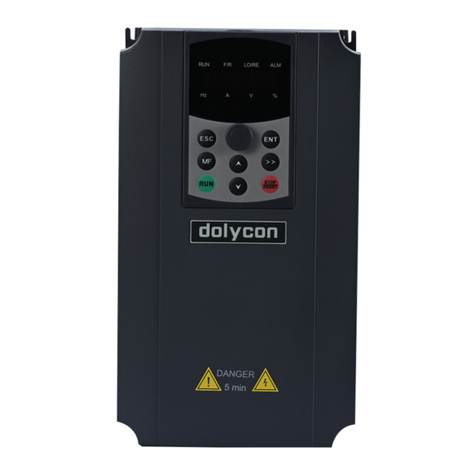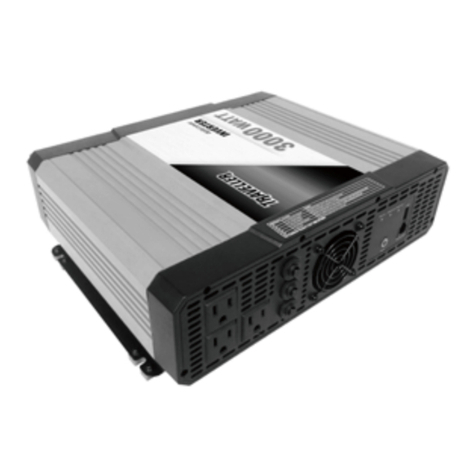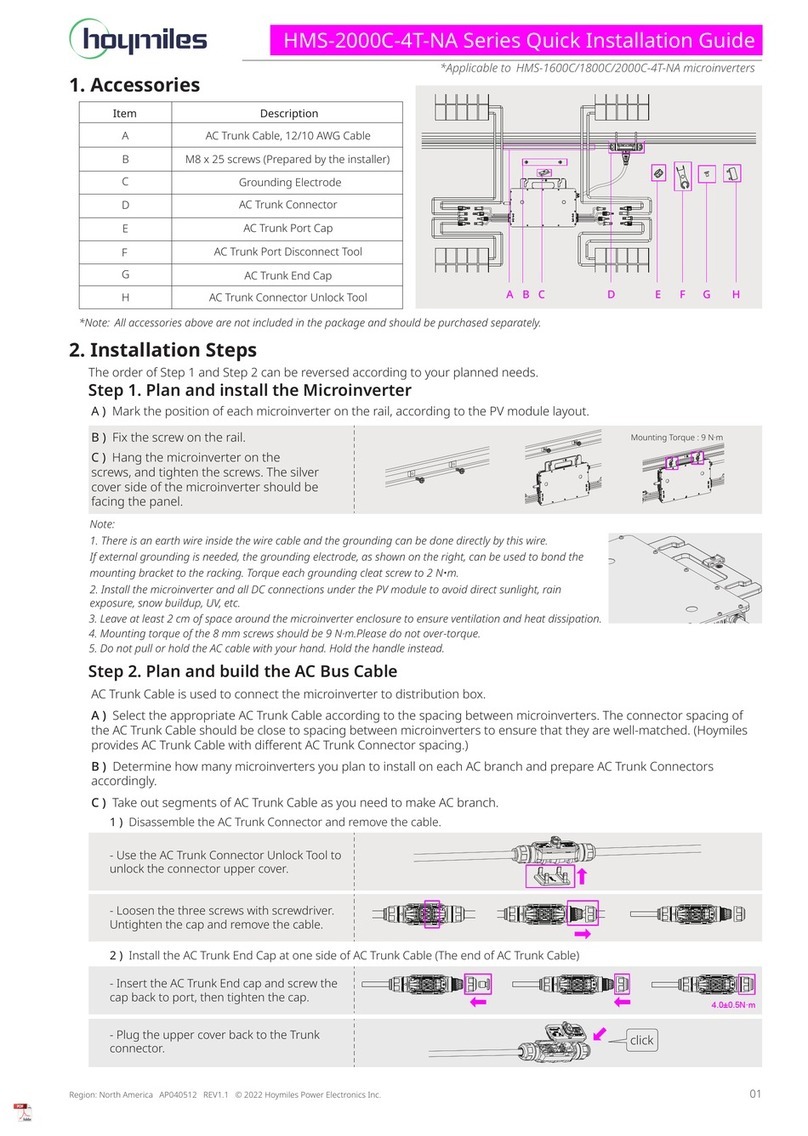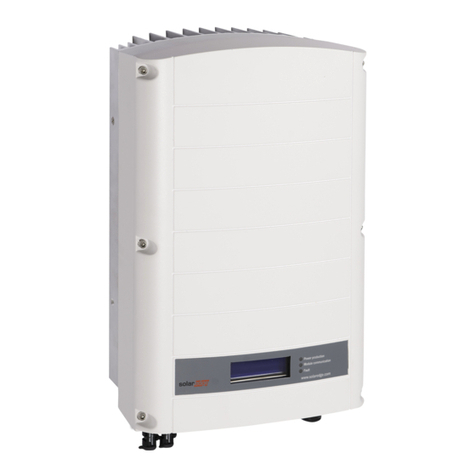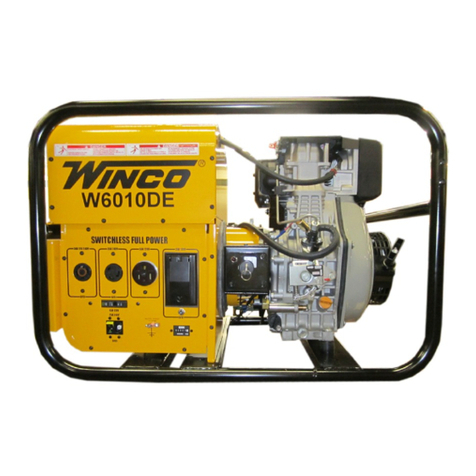Fuji Bikes ROBIN RGX6500 User manual

1
RGX6500
RGX7500
FUJI HEAVY INDUSTRIES LTD.

2

3
1. SPECIFICATIONS

4
2. PERFORMANCE CURVES
RGX6500
60Hz 240V
RGX7500
60Hz 240V

5
3. GENERAL DESCRIPTION
Canister??

6
CONTROL PANEL
50Hz-220V, 240V, 60Hz-220V, 240V,
60Hz-110/, 220V

7
SERIAL NUMBER
CONSTRUCTION
RGX6500 / RGX7500
Isolator SlipRing ThroughBolt

8
4. RANGE OF APPLICATIONS
Generally, the power rating of an electrical appliance indicates the amount of work that can be done by it.
The electric power required for operating an electrical appliance is not always equal to the output wattage
of the appliance. The electrical appliances generally have a label showing their rated voltage, frequency,
and power consumption (input wattage). The power consumption of an electrical appliance is the power
necessary for using it. When using a generator for operating an electrical appliance, the power factor and
starting wattage must be taken into consideration.
In order to determine the right size generator, it is necessary to add the total wattage of all appliances to be
connected to the unit.
Refer to the followings to calculate the power consumption of each appliance or equipment by its type.
(1) Incandescent lamp, heater, etc. with a power factor of 1.0
Total power consumption must be equal to or less than the rated output of the generator.
Example: A rated 3000W generator can turn thirty 100W incandescent lamps on.
(2) Fluorescent lamps, motor driven tools, light electrical appliances, etc.
with a smaller power factor
Select a generator with a rated output equivalent to 1.2 to 2 times of the power consumption of the load.
Generally the starting wattage of motor driven tools and light electrical appliances are 1.2 to 3 times
lager than their running wattage.
Example: A rated 250 W electric drill requires a 400 W generator to start it.
NOTE 1: If a power factor correction capacitor is not applied to the fluorescent lamp, the more power
shall be required to drive the lamps.
NOTE 2: Nominal wattage of the fluorescent lamp generally indicates the output wattage of the lamp.
Therefore, if the fluorescent lamp has no special indication as to the power consumption,
efficiency should be taken into account as explained in item (5) on the following page.
(3) Mercury lamps with a smaller power factor
Loads for mercury lamps require 2 to 3 times the indicated wattage during start-up.
Example: A 400 W mercury lamp requires 800 W to 1200 W power source to be turned on. A rated
3000 W generator can power two or three 400 W mercury lamps.
(4) Initially loaded motor driven appliances such as water pumps, compressors, etc.
These appliances require large starting wattage which is 3 to 5 times of running wattage.
Example: A rated 900 W compressor requires a 4500 W generator to drive it.
NOTE 1: Motor-driven appliances require the aforementioned generator output only at the starting.
Once their motors are started, the appliances consume about 1.2 to 2 times their rated power
consumption so that the excess power generated by the generator can be used for other
electrical appliances.
NOTE 2: Motor-driven appliances mentioned in items (3) and (4) vary in their required motor starting
power depending on the kind of motor and start-up load. If it is difficult to determine the
optimum generator capacity, select a generator with a larger capacity.

9
(5) Appliances without any indication as to power consumption
Some appliances have no indication as to power consumption; but instead the work load (output) is
indicated. In such a case, power consumption is to be worked out according to the numerical formula
mentioned below.
Efficiencies of some electrical appliances are as follows:
Single-phase motor …. 0.6 to 0.75
Fluorescent lamp ……. 0.7 to 0.8
Example 1: A 40W fluorescent lamp means that its luminous output is 40W. Its efficiency is 0.7 and
accordingly, power consumption will be 40÷0.7= 57W. As explained in Item (2), multiply
this power consumption value of 57 W by 1.2 to 2 and you will get the figure of the
necessary capacity of a generator. In other words, a generator with a rated output of 1000W
capacity can light nine to fourteen 40 W fluorescent lamps.
Example 2: Generally speaking, a 400 W motor means that its work load is 400 W. Efficiency of this
motor is 0.7 and power consumption will be 400÷0.7= 570 W. When this motor is used for
a motor-driven tool, the capacity of the generator should be multiple of 570 W by 1.2 to 3 as
explained in the item (3). 570 (W) ×1.2 to 3 = 684 (W) to 1710 (W)
Table 4-1

10
NOTES: Wiring between generator and electrical appliances
1. Allowable current of cable
Use a cable with an allowable current that is higher than the rated input current of the load (electrical
appliance). If the input current is higher than the allowable current of the cable used, the cable will
become excessively heated and deteriorate the insulation, possibly burning it out. Table 4-2 shows
cables and their allowable currents for your reference.
2. Cable length
If a long cable is used, a voltage drop occurs due to the increased resistance in the conductors
decreasing the input voltage to the load (electrical product). As a result, the load can be damaged.
Table 4-2 shows voltage drops per 100 meters of cable.
Table 4-2
Voltage drop indicates as
R means resistance (Ω/100 m) on the above table.
I means electric current through the wire (A).
L means the length of the wire (m).
The length of wire indicates round length, it means twice the length from generator to electrical tools.

11
5. MEASURING PROCEDURES

12

13
Model Hz Rated voltage
120V 220V 240V
RGX6500 50 - 219 - 228 239 - 248
Voltage range
60 118 - 127 219 - 228 239 - 248
RGX7500 50 - 219 - 228 239 - 248
60 118 - 127 219 - 228 239 - 248

14
An insulation resistance of 1 megohm or more is normal.
(The original insulation resistance at the time of shipment from the factory is 10 megohm or more.)
If it is less than 1 megohm, disassemble the generator and measure the insulation resistance of
the stator, rotor and control panel individually.
(1) STATOR
Measure the insulation resistance between
each lead wire and the core.
(2) ROTOR
Measure the insulation resistance between
the slip ring and the core.
(3) CONTROL PANEL
Measure the insulation resistance between
the live parts and the grounded parts.
Any part where the insulation resistance is less than 1MΩhas faulty insulation, and may cause
electric leakage and electric shock.
Replace the faulty part.

15
6. CHECKING FUNCTIONAL MEMBERS
6-1 RECEPTACLES
Using a circuit tester, check continuity between the
two terminals at the rear of the receptacles while the
receptacle is mounted on the control panel.
When continuity is found between the output terminals
of the receptacle with a wire connected across these
terminals, the receptacle is normal.
When the wire is removed and no continuity is found
between these terminals, the receptacles are also normal.
6-2 CIRCUIT BREAKER
Check continuity between each of two terminals
at the rear of the circuit breaker while it is mounted
on the control panel.
Normally, there is continuity between each of the two
when the circuit breaker is on while there is no continuity
when the circuit breaker is off.

16
6-3 STATOR
Disengage connectors on the wires from stator and check the resistance between wires with a
circuit tester referring to the following table.
NOTE: If the circuit tester is not sufficiently accurate, it may not show the values given and may
give erroneous readings. Erroneous readings will also occur when there is a wide variation
of resistance among coil windings or when measurement is performed at ambient
temperatures different from 20
°
C (68
°
F).
6-4 ROTOR ASSEMBLY
1) Field coil
Remove the brush holder and measure
resistance between the slip rings.
NOTE: If the circuit tester is not sufficiently accurate, it may not show the values given and may
give erroneous readings. Erroneous readings will also occur when there is a wide variation
of resistance among coil windings or when measurement is performed at ambient
temperatures different from 20
°
C (68
°
F).

17
2) Cleaning Slip rings
The slip ring surfaces must be uniformly
bright. Slip rings showing black spots,
excessive wear, or uneven wear must be
repaired. A stained slip ring lowers generator
efficiency and output voltage. Polish the
slip rings with fine sandpaper while turning
the rotor until rough spots disappear. Care
should be taken not to touch the rotor coils
with the sandpaper.
6-5 BRUSH
The brushes must be smooth where they
Contact the slip rings. If not, polish smooth
the brushes with sandpaper. A brush that
is not smooth produces arcs between the
brush and slip ring leading to possible damage.
Usable brush lengths are from 5 mm to 15 mm
[0.2" to 0.6"].
A brush shorter than 5 mm must be replaced
because decreased contact pressure between
the brush and slip ring lowers generator
efficiency and output voltage.
6-6 A.V.R (AUTOMATIC VOLTAGE REGULATOR)
1) Features
This AVR operates to control the field current
in order to maintain the output voltage for the
AC current, which generated by the magnetic
flux by the field coil.
2) A.V.R. trouble may be identified by simply
looking at the A.V.R., or by the inter-lead
resistance with a tester, or actually mounting
it in the generator and operating it.

18
(a) A.V.R. TROUBLE IDENTIFICATION by APPEARANCE
If an A.V.R. electronic part is burnt dark, or the surface epoxy resin melted, it often indicates
A.V.R. trouble.
(b) IDENTIFYING A.V.R. TROUBLE by CHECKING INTER-LEAD RESISTANCE
Check the inter-lead resistance of the A.V.R. with a tester, referring to the following table.
If the tester readings very greatly from the values specified in the table on next page, the A.V.R.
is faulty.
NOTE: Take tester inaccuracy into account in reading the tester.
*Checking table for analogue circuit tester
(c) IDENTIFYING A.V.R. TROUBLE by MOUNTING and OPERATING in THE GENERATOR
SCR or transistor damage cannot be detected by simply looking at the A.V.R. or checking the
lead resistance. Check it by mounting the suspected faulty A.V.R. in a normal generator, or
mount a normal A.V.R. in a generator which fails to generate voltage.

19
6-7 DIODE STACK
Table6-7a Table6-7b
Circuit inside of the diode stack is as shown in Table 6-7a.
Check continuity between each terminal by using a circuit tester as shown in Table 6-7b.
The diode stack is normal when continuity is as follows:
* Checking table for analogue circuit tester.
* Checking table for digital circuit tester.
NOTE 1: In checking the diode, direction of connection is contrary to the ordinary case because of
characteristics of the diode and battery incorporated in the tester.
NOTE 2: "Continuity" means forward direction characteristics of the diode, and different from short
circuit condition (In which a pointer of the tester goes out of its normal scale), shows
resistance to some extent. When results of the checking indicate failure even in one

20
section, replace with a new one.
6-8 OIL SENSORS
(1) Disconnect wires coming from the sensor at the connection.
(2) Loosen the sensor to remove it from the engine.
(3) Plug the opening of oil filler hole (created after sensor is removed) with suitable means such
as oil gauge.
(4) Connect the removed wires again with the oil sensor.
(5) Start the engine with the oil sensor removed and confirm if ;
a. Engine stops after 5 seconds which is normal, or
b. Engine does not stop after more than 10 seconds which is unusual.
NOTE: The sensor will not operate properly when wire is broken or poorly connected.
Check the wires for correct connection. If it fails to stop within 5 seconds after the wirings
have been checked, the sensor is defective. Replace the sensor with new one.
6-8-1 SPECIFICATIONS
6-8-2 CONSTRUCTION AND OPERATION
Disconnect wires coming from the sensor. The
oil sensor is composed of the float, permanent
magnet incorporated into the float and the oil
sensor.
In accordance with the oil level, the float moves
up and down.
When the oil level is high, the float
moves up.
When the oil level is low, the float
moves down.
The permanent magnet is close to the lead
switch, and the lead switch is activated by the
magnetic force.
NOTE: With regards to the wiring diagram,
please refer to the section 9 (page46).
This manual suits for next models
1
Table of contents

